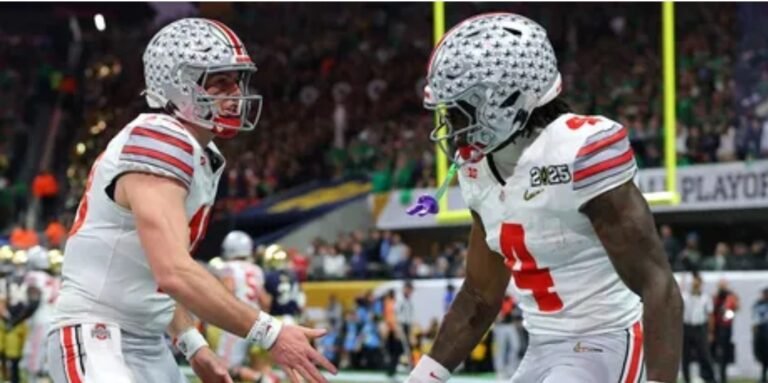In the aftermath of Ohio State’s triumphant national championship victory, the university’s football program was poised to bask in the glory of its success. However, the unexpected departure of offensive coordinator Chip Kelly to the NFL’s Las Vegas Raiders has cast a shadow over the celebration. This abrupt shift has left players, fans, and analysts grappling with the implications for the Buckeyes’ future.
Chip Kelly’s tenure at Ohio State was brief yet impactful. After a distinguished career as a head coach in the NFL, Kelly returned to college football, taking on the role of offensive coordinator for the Buckeyes. His innovative strategies and leadership were instrumental in leading Ohio State to a national championship, showcasing his ability to adapt and excel across different levels of football.
The announcement of Kelly’s departure to join Pete Carroll’s staff with the Las Vegas Raiders has sent shockwaves through the college football community. His move back to the NFL, where he previously served as head coach for the San Francisco 49ers and the Philadelphia Eagles, underscores the transient nature of coaching careers and the allure of professional football. Kelly’s decision to leave a successful college program for the NFL reflects the ongoing tension between collegiate and professional football, where the promise of higher salaries and the prestige of the NFL can be irresistible.
Ohio State’s star wide receiver, Jeremiah Smith, epitomized the team’s reaction to Kelly’s departure. Known for his typically reserved demeanor, Smith’s one-word response—”Man”—conveyed a profound sense of disappointment and disbelief. This succinct expression encapsulated the sentiments of many within the program, highlighting the personal and professional impact of Kelly’s exit.
The timing of Kelly’s departure is particularly poignant. Following a national championship season, the expectation is that a program would experience stability and continuity. Instead, Ohio State now faces the challenge of replacing a key figure in its offensive strategy. This situation raises questions about the sustainability of success in college football and the factors that influence a coach’s decision to leave a winning program.
The departure also ignites a broader conversation about the dynamics between college football and the NFL. Coaches moving between these levels is not unprecedented, but the frequency and timing of such transitions can disrupt the development of college programs. For Ohio State, the loss of Kelly may necessitate a reevaluation of its offensive philosophy and could influence recruiting efforts, as prospective players and coaches assess the program’s stability.
In the wake of Kelly’s departure, Ohio State must navigate the complexities of maintaining its competitive edge. The university will need to identify a successor who can uphold the offensive prowess that led to the national championship. This process will involve balancing the desire for innovation with the need for continuity, ensuring that the program remains a formidable force in college football.
Ultimately, Chip Kelly’s move to the NFL serves as a stark reminder of the transient nature of coaching careers and the ever-evolving landscape of college football. While Ohio State’s national championship victory will be remembered, the program’s ability to adapt and thrive in the face of unexpected changes will define its future trajectory.
